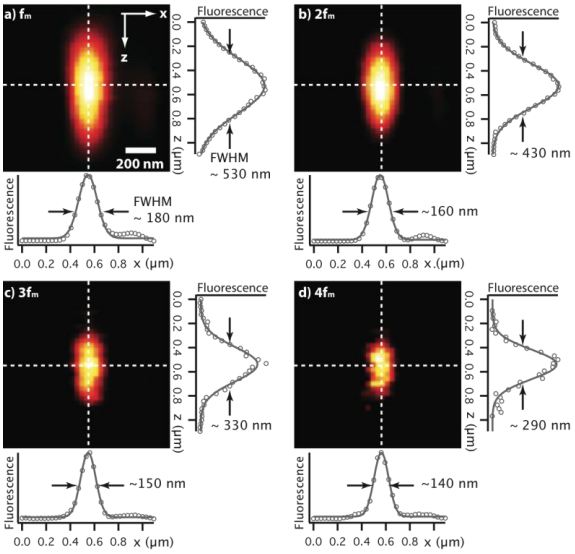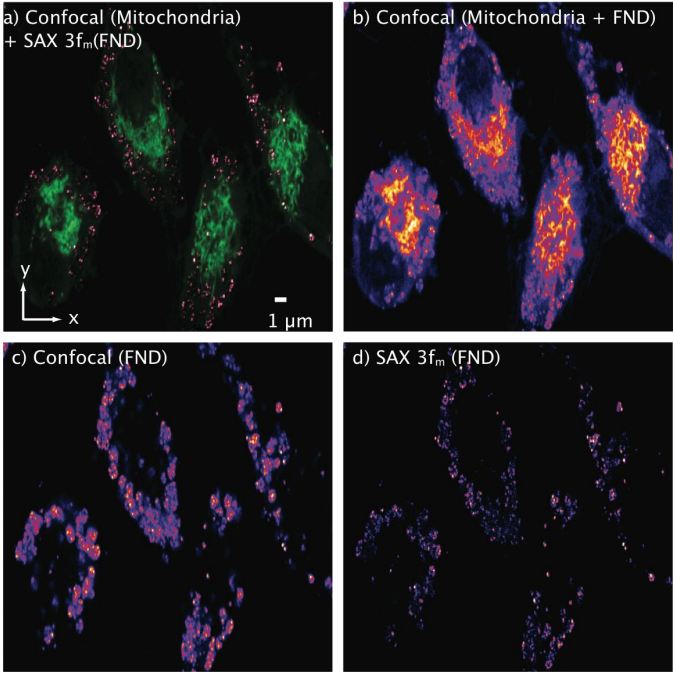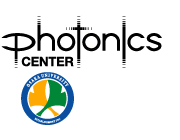【研究成果】2011
研究成果28
SAX microscopy with fluorescent nanodiamond probes for high-resolution fluorescence imaging
Masahito Yamanaka, Yan-Kai Tzeng, Shogo Kawano, Nicholas I. Smith, Satoshi Kawata, Huan-Cheng Chang, and Katsumasa Fujita
Biomedical Optics Express, Vol. 2, Issue 7, pp. 1946-1954 (2011)
We report the use of fluorescent nanodiamonds (FNDs) as a photostable fluorescent probe for high resolution saturated excitation (SAX) microscopy. We confirmed that FNDs show a nonlinear fluorescence response under saturated excitation conditions generated by intense excitation light. Using FNDs, we quantified the spatial resolution improvement inherent in SAX microscopy, and experimentally demonstrated the scalability of the spatial resolution of SAX microscopy.
For improving the spatial resolution while keeping the temporal resolution, a FND possessing a larger absorption cross-section and a shorter fluorescence lifetime is desirable since it would allow rapid cycling of fluorescence excitation and emission, resulting an increase in the number of fluorescence photons detectable in a unit time. The photostability of the FNDs allowed us to perform nanoparticle imaging of a multicolor-stained macrophage cell with a spatial resolution beyond the diffraction limit.





